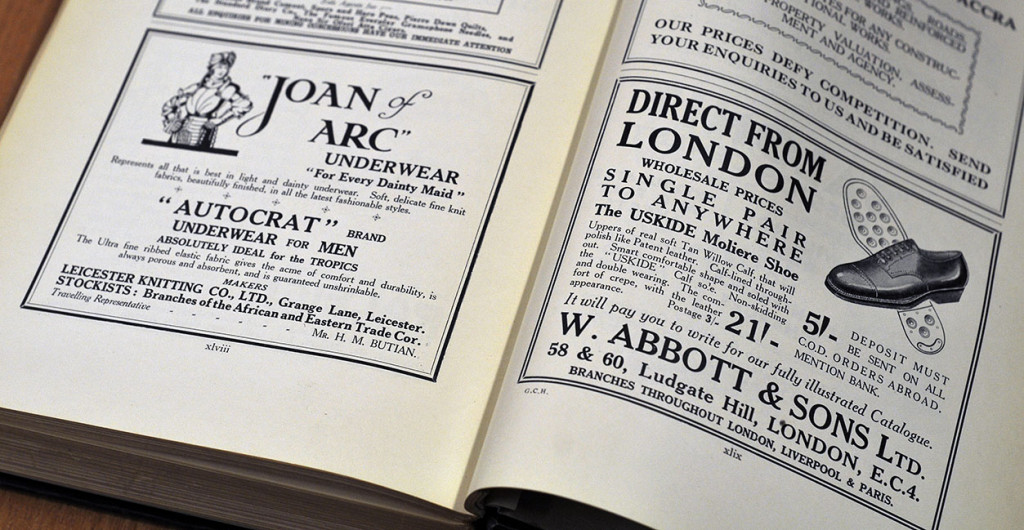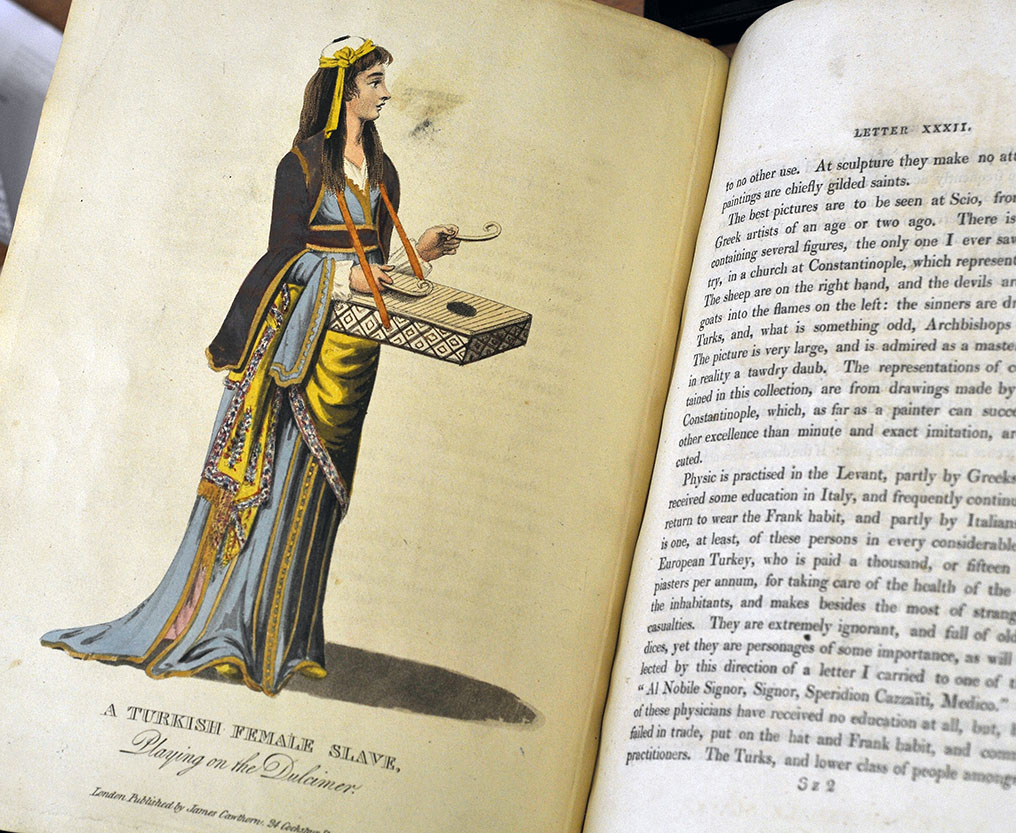In the 1923 Handbook to the Gold Coast, editor John Maxwell advises British crown agents and merchants moving to West Africa on what fashions were appropriate in those far-flung colonies. Some of his recommendations fit seamlessly into our Lawrence of Arabia stereotype of the empire’s explorers, like his worshipful praise of khaki, styled either as “shorts or long trousers.” “There’s nothing better,” Maxwell declares, though he warns that because “clothes deteriorate quicker in the tropics…it is therefore advisable to be on the safe side and take a small surplus rather than too little.”
However, his advice to bring “a housewife with a good supply of darning wool, thread, needles, buttons, etc.,” may be jarring for the modern reader unacquainted with the “housewife” sewing kits popular in the British army in the 19th and 20th centuries. Those young colonists who did pack up their human housewives were “advised to get in touch, through the Colonial Office, with the wife of some member of the department who has been to West Africa.”

The 1928 edition of the Handbook to the Gold Coast advertises the perfect underwear & shoes for the tropics.
Travel writing is full of the familiar and the strange, both for the author and the reader trying to piece together the history of fashion through letters and journals where clothes are described either meticulously or barely at all. If only those gentlemen on their Grand Tours had given us an archive of selfies, a repository of vanity that would have saved hours scrounging through cramped handwritten letters for the smallest detail.
While no such archive exists, we are lucky to have a prodigious supply of travel writing that illustrates a remarkable amount of fashion over the past few centuries. Though lacking the cultural nuance of someone speaking for their own country, these outsider perspectives offer a physical, and often blunt, description of how the people they met presented themselves.
Horror drove many of the writers to describe the fashions they saw, like the trauma of Baron Broughton during his travels through Constantinople. “Nothing can be more dissimilar than the appearance of a Turkish lady at home and abroad,” he says. “Her envelope is thrown off within doors, and…her under are then her upper garments, which, although covered with gold and other heavy ornaments, are certainly not contrived for the concealment of her charms.” Joseph Pitton de Tournefort was similarly baffled, though perhaps less scandalized, by the women of Turkey during his voyage through the Levant. “Though the Women in Turkey do not shew themselves in publick, they are yet very magnificent in their Habits,” he describes. “They wear Breeches like Men, which reach as low as the Heel in the manner of a Pantaloon, at the end of which is a very neat Sock of Spanish Leather.”

An illustration from Baron Broughton’s “A journey through Albania, and other provinces of Turkey in Europe and Asia, to Constantinople, during the years 1809-1810”.
Though much of our travel writing comes from Europeans leaving the continent, their home countries are not spared from criticism. Muslim scholar Mirza Abu Taleb Khan was appalled by the women he saw in Paris during his 18th century travels, remarking that “the waists of their gowns were so short and full-bodied, that the women appeared humpbacked; that whilst the drapery in the front was so scanty as barely to conceal half their bosom.”
Not all comments were negative, of course, like the observations of Englishwoman Helen Maria Williams who marvelled at the ballroom fashions in Switzerland in 1798. “For a short time during the winter, in defiance of frost and snow, the costume of a few reigning balls was not à la Grec, but à la Sauvage. The bodice, under which no linen was worn (shifts being an article of dress long since rejected at Paris, both by the Greeks and the Savages)…was made of knitted silk, clinging exactly to the shape, which it perfectly displayed…and the feet, which were either bare, or covered with a silk stocking of flesh colour, were decorated with diamonds.”
Travel writing offers an invaluable resource for the history of fashion. To learn more, please see the IHR Library Collection Guide on Fashion History and check out our temporary exhibition located on the first and third floors of the library.

I think there may be a mistake in the date of the link to the ballroom fashions of Switzerland. 1798 seems far more probable than 1748.